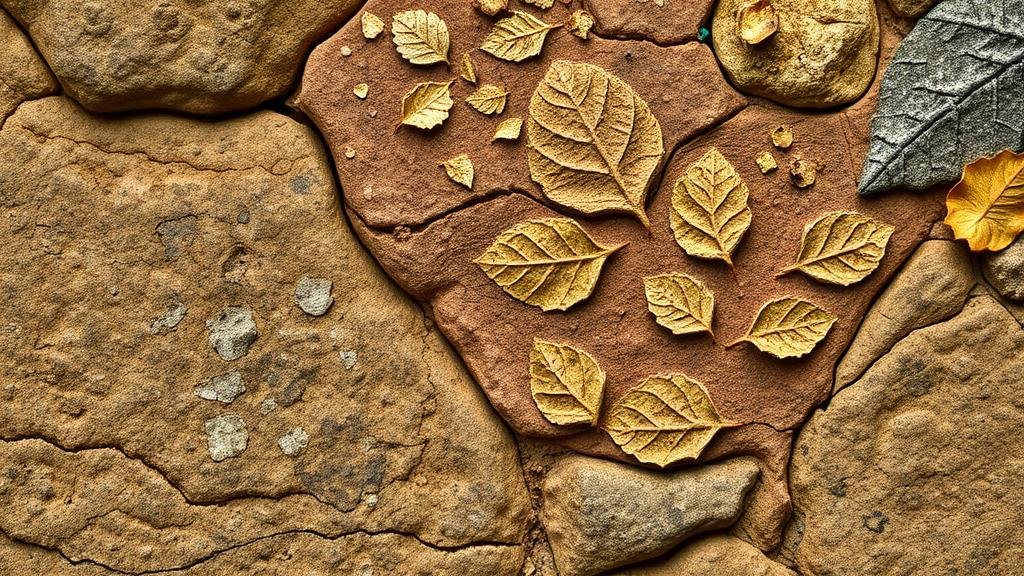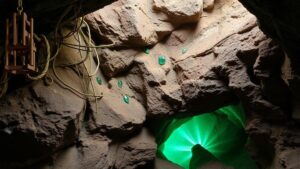Fossilized Leaves and Forest Floors: Ancient Plant Life Locked in Stone
Fossilized Leaves and Forest Floors: Ancient Plant Life Locked in Stone
Fossilized leaves and the remnants of ancient forest floors offer an intriguing glimpse into the Earths distant past, serving as vital records of plant evolution and ancient ecosystems. For rockhounds and mineral collectors, these specimens not only present aesthetic value but also educational and scientific significance. In this article, we delve into the world of fossilized leaves, exploring their formation, types, significance, and practical tips for collectors.
The Formation of Fossilized Leaves
The process of fossilization typically involves several key steps. Fossilized leaves form when plant material is buried under sediment, protecting it from decay. Over millennia, the layers of sediment build up, exerting pressure that assists in the process of lithification — turning organic material into rock. The essential factors that influence this process include:
- Burial Depth: The deeper the plant material is buried, the greater the pressure and temperature, enabling a higher likelihood of fossilization.
- Mineral Composition: Dissolved minerals in groundwater can infiltrate and replace plant cells, causing them to become mineralized.
- Environmental Conditions: Rapid burial in anoxic (oxygen-poor) environments minimizes decomposition, enhancing the preservation of leaves and plant structures.
Common sedimentary environments for preservation include riverbanks, lake beds, and floodplains where sediments accumulate quickly.
Understanding Types of Fossilized Leaves
Fossilized leaves come in various forms, typically classified into two main categories: compressions and impressions. Understanding these types can aid collectors in identifying and categorizing their finds.
- Compressions: These fossils are created when leaves are flattened between sediment layers. The original plant tissue may be partially or fully mineralized, displaying fine details of the leaf structure.
- Impressions: These occur when a leaf leaves an imprint in the surrounding sediment. While they may lack the same detail as compressions, they are excellent for studying the overall shape and venation patterns.
Approximately 75% of all fossil plants are found in sedimentary rock formations, providing a direct link to past climates and environments.
Significance of Fossilized Leaves in Scientific Research
Fossilized leaves are not just fascinating collectibles; they also play a crucial role in paleobotany, the study of ancient plants. e fossils help scientists understand:
- Ancient Climates: By examining leaf morphology and size, scientists can deduce the climatic conditions that prevailed when the plants were alive. For example, the presence of broad, flat leaves may indicate a warm, wet climate.
- Vegetation Shifts: Fossil records illustrate how plant life has adapted and evolved in response to changing environmental conditions, contributing to the understanding of biodiversity over geological timescales.
- Ecosystem Reconstruction: Analyzing fossilized leaves alongside other fossils allows researchers to reconstruct ancient ecosystems and understand interactions among species.
For example, the discovery of fossilized leaves from temperate rainforests in the Arctic regions suggests that these areas were once much warmer, challenging our understanding of climate change.
Practical Tips for Collectors
Rockhounding for fossilized leaves can be a highly rewarding activity, but it requires some knowledge and preparation. Here are actionable tips for aspiring collectors:
- Research Locations: Focus on areas known for fossil deposits, such as sedimentary rock formations from the Late Cretaceous period. Notable sites include the Green River Formation in Utah and the Messel Pit in Germany.
- Respect Laws and Guidelines: Always ensure that you have permission to collect fossils and adhere to local regulations regarding paleontological sites.
- Use Appropriate Tools: Equip yourself with a rock hammer, chisels, and protective eyewear. A small brush is also useful for cleaning dirt off fossils without causing damage.
- Document Your Findings: Keep thorough records of where and when you found each fossil, along with photographs. This data can enhance the archaeological context of your collection.
Incorporating these practices will enhance your fossil-hunting experience, ensuring you gather not only beautiful specimens but also scientifically valuable ones.
Conclusion
Fossilized leaves and forest floors are more than mere curiosities; they represent a physical record of our planets botanical history, climate changes, and evolutionary processes. For rockhounds and mineral collectors, these fossils present an exciting opportunity to connect with natures past. By understanding their formation, identifying types, and recognizing their significance, collectors can enrich their collections while contributing to the ongoing study of ancient life on Earth.


